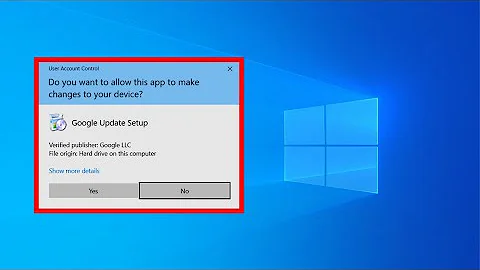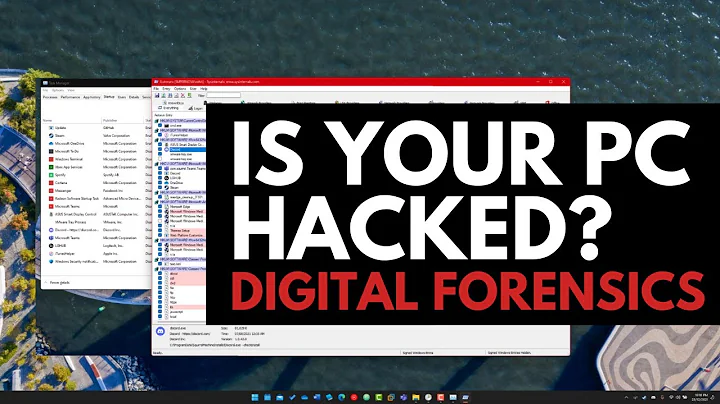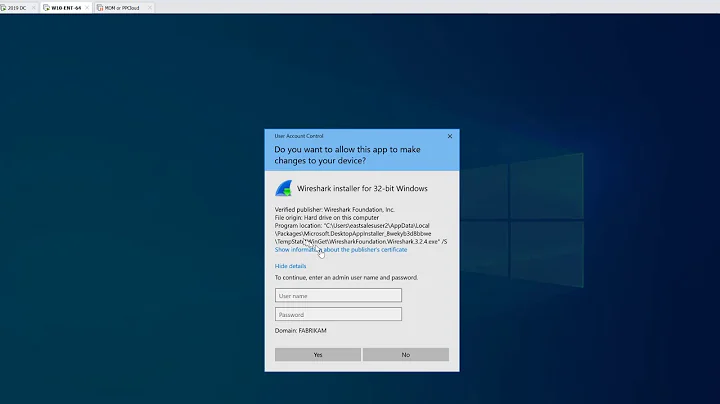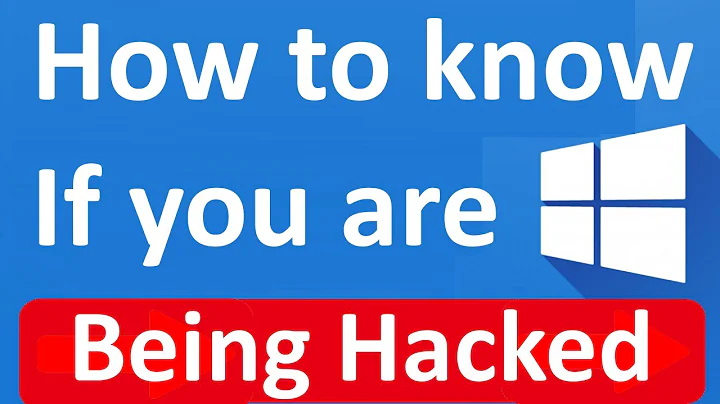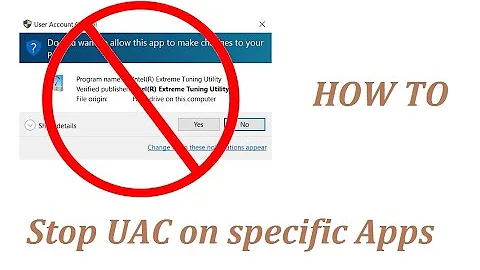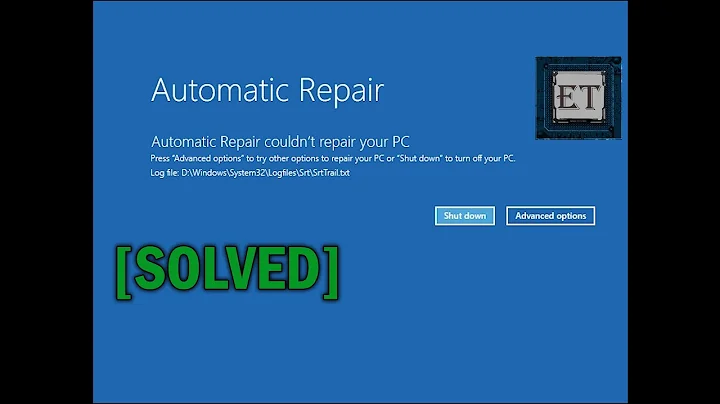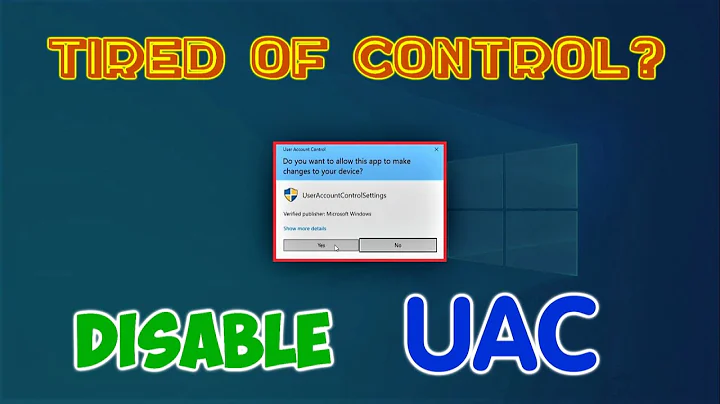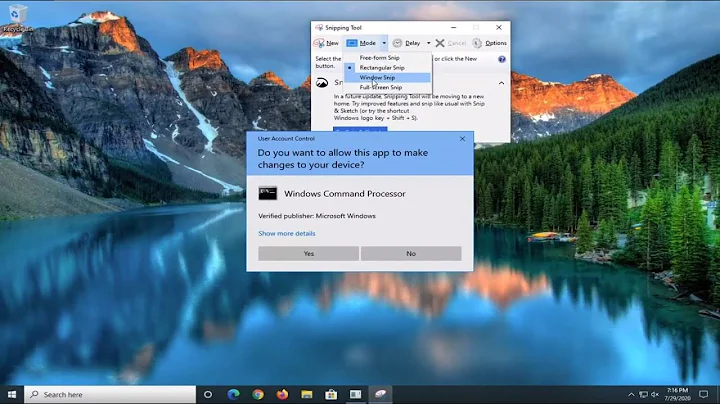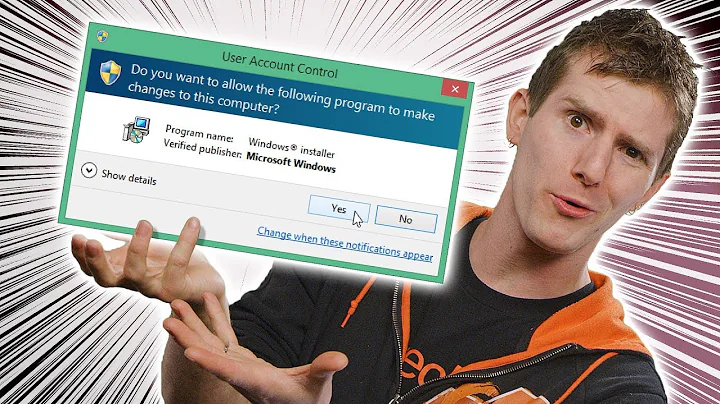How does Windows decide whether to display the UAC prompt?
Solution 1
You are almost certainly hitting a Windows Installer Detection Technology🕗 compatibility heuristic. Windows will try to detect when an application is an installer, and probably needs to be elevated.
Installer Detection only applies to:
- 32 bit executables
- Applications without a
requestedExecutionLevel- Interactive processes running as a Standard User with LUA enabled
Before a 32 bit process is created, the following attributes are checked to determine whether it is an installer:
- Filename includes keywords like "install," "setup," "update," etc.
- Keywords in the following Versioning Resource fields: Vendor, Company Name, Product Name, File Description, Original Filename, Internal Name, and Export Name.
- Keywords in the side-by-side manifest embedded in the executable.
- Keywords in specific StringTable entries linked in the executable.
- Key attributes in the RC data linked in the executable.
- Targeted sequences of bytes within the executable.
So, as you said:
but i have a exe which checks for updates to software
My guess is that this CheckForUpdates.exe is triggering the compatibility heuristics.
The correct thing to do is to add an assembly manifest to your "checking" executable, informing Windows that it should not elevate the utility. This is done with a requestedExecutionLevel of asInvoker in the manifest:
AssemblyManifest.xml:
<?xml version="1.0" encoding="UTF-8" standalone="yes"?>
<assembly xmlns="urn:schemas-microsoft-com:asm.v1" manifestVersion="1.0">
<assemblyIdentity
version="1.0.0.0"
processorArchitecture="X86"
name="ITReasearchAssociates.Contoso.Updater"
type="win32"
/>
<description>Update checker</description>
<!-- Run as standard user. Disable file and registry virtualization -->
<trustInfo xmlns="urn:schemas-microsoft-com:asm.v2">
<security>
<requestedPrivileges>
<requestedExecutionLevel level="asInvoker" uiAccess="false"/>
</requestedPrivileges>
</security>
</trustInfo>
</assembly>
That way your "Check For Updates" application will never elevate, and never mistakenly gain administrative privileges.
If you want your updater to actually apply updates (updates which require administrative privileges), then you would launch your updater application as an administrator.
Sample Code
//Check if there are updates available
if (!CheckForUpdatesAvailable())
return; //no updates. We're done
//If the user is an administrator, then get the update
if (IsUserAnAdmin())
{
//Maybe throw in a "Hey, user, wanna get the update now?" dialog
DownloadAndApplyUpdates();
return;
}
//The user is not an admin.
//Relaunch ourselves as administrator so we can download the update
//Maybe throw in a "Hey, user, wanna get the update now?" dialog. A button with a UAC shield on it
ExecuteAsAdmin(Application.ExecutablePath, "/downloadUpdate");
with the helper functions:
private Boolean IsUserAnAdmin()
{
//Public domain: no attribution required
//A user can be a member of the Administrator group, and yet not be an administrator.
//Conversely, the user can be an administrator while not being a member of the administrators group.
var identity = WindowsIdentity.GetCurrent();
return (null != identity && new WindowsPrincipal(identity).IsInRole(WindowsBuiltInRole.Administrator));
}
private void ExecuteAsAdmin(string Filename, string Arguments)
{
//Public domain: no attribution required
ProcessStartInfo startInfo = new ProcessStartInfo(Filename, Arguments);
startInfo.Verb = "runas";
System.Diagnostics.Process.Start(startInfo);
}
Then on startup you just need to look for the /downloadUpdate command-line parameter to know that you're job is to actually do work:
public Form1()
{
InitializeComponent();
//Ideally this would be in program.cs, before the call to Application.Run()
//But that would require me to refactor code out of the Form file, which is overkill for a demo
if (FindCmdLineSwitch("downloadUpdate", true))
{
DownloadAndApplyUpdates();
Environment.Exit(0);
}
}
Note: Any code is released into the public domain. No attribution required.
Solution 2
Someone can specify in the configuration of the exe that this file needs to be executed with higher Privileges.
How to request Admin Privileges
I don't know what this update is for, but I'd suggest that it needs to update a component like a service, or some files that are located in the ProgramFiles-Dir. Therefore it needs Admin Privileges.
Solution 3
Your programs probably lack application manifests that mark them as non-legacy. As a result Windows will apply scripted installer detection heuristics to decide whether your program is an installer. This is pretty much the only way an "unexpected" UAC prompt gets raised.
These heuristics include keyword searches within the EXE file name and several of the extended properties of the EXE, and may even look for well-known binary signatures (i.e. byte strings) inside the file.
BTW, your crypto-signing doesn't enter into this at all. And it doesn't help a thing if it wasn't issued by a trusted CA.
For that matter anyone who trusts code just because Windows reports the commpany name on the UAC prompt is a fool. Malware authors steal these all the time, and for that matter they are trivial to obtain and almost never reported by users when crap programs cause problems. Save your money, code signing certs are a failed concept.
Related videos on Youtube
IT researcher
Updated on June 13, 2022Comments
-
IT researcher almost 2 years
In my VB6 application I open other EXE files. My application runs without any UAC prompt, but I have an EXE which checks for updates to software. This prompts the UAC prompt. So how does Windows decide whether to show the UAC prompt? I saw this link . So does it depend on the code I wrote in my application? It is interesting that my application (that is the main EXE file) does not prompt UAC whereas a small EXE which checks and downloads updates prompts the UAC. I have all the EXE files digitally signed. I already had a glance at following links:
http://msdn.microsoft.com/en-us/library/windows/desktop/aa511445.aspx
http://technet.microsoft.com/en-us/library/cc505883.aspx and some other.
But still I am not clear about it.
-
IT researcher over 10 yearsMy doubt is how windows decided that uac should prompt or not. Your method runs the program as admin and it does ask user to enter password of admin.
-
IT researcher over 10 yearsThe updater is created by me. So some code in that triggers UAC to prompt? I didn't run the updater exe as admin(run as admin which causes UAC to prompt always)in my code. So is it some code triggering UAC?
-
Damon over 10 yearsThat's nevertheless how it works, although the Codeproject article is not very complete. You have a small choice of different options you can ask for in that manifest with subtle or non-existent differences (such as request highest possible privilegue or admin privilegue, or blah), but basically it's just that. Windows security is pretty dumb, though on the other hand I wish I could quote a system that is less dumb (Linux is even more stupid, as it makes you type in the root password...).
-
IT researcher over 10 yearsOk. So without running as administrator and having proper manifest file can avoid UAC prompts in my case?
-
IT researcher over 10 yearsAlso how to create a manifest file which will make application to launch without UAC prompt?
-
MSalters over 10 yearsI believe Windows does have some additional heuristics: did it need UAC in the past, for instance? Is it named "setup.exe" ?
-
MSalters over 10 years@ITresearcher: If that is your real question (how to prevent the prompt), you should ask that - and provide more information than in this question. But the answer might very well be "The UAC prompt is there for good reason, you are changing the installed software, and that should be an intentional decision by the user".
-
Bob77 over 10 yearsIf you want a spawned program to run with the parent's rights it needs "asInvoker" specified in the <requestedExecutionlevel> element of the manifest. To create and add application manifests to VB6 applications you can use 3rd party tools or create and embed them manually.
-
IT researcher over 10 yearsThe file name is not setup.exe. But does UAC depend on the file name also?
-
 StayOnTarget about 7 yearsI will add that the filename rules listed above are almost certainly incomplete. Anecdotally an app I have which requires UAC when named like APP123.exe does NOT reqiure UAC if renamed to APP.exe.
StayOnTarget about 7 yearsI will add that the filename rules listed above are almost certainly incomplete. Anecdotally an app I have which requires UAC when named like APP123.exe does NOT reqiure UAC if renamed to APP.exe. -
ewerybody over 5 yearsThanks @Ian Boyd! I saw this one: stackoverflow.com/questions/1423492 , installed Windows SDK and used
mt.exeto add a manifest file like suggested to my.exe! Works like a charm! -
 Sajuuk almost 4 years"Targeted sequences of bytes within the executable." can you elaborate on that?
Sajuuk almost 4 years"Targeted sequences of bytes within the executable." can you elaborate on that? -
mistertodd almost 4 years@Sajuuk I cannot. Only Microsoft, or someone who has reviewed the Windows source code and signed an NDA, would know.
